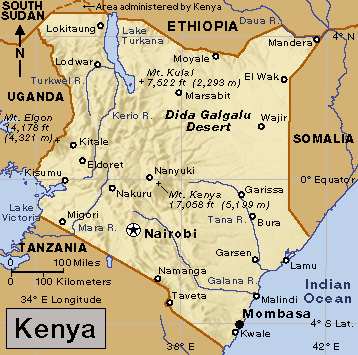Nairobi << ny ROH bee >> (pop. 4,397,073) is the capital of Kenya and the most important commercial center in eastern Africa. The city lies on a high plateau in south-central Kenya.

The central area of Nairobi has many modern buildings, and its main streets are lined with trees. This area includes the parliament buildings, the Kenyatta International Conference Center, the Holy Family Cathedral, the Jamia Mosque, and hotels and commercial buildings. The National Museum and the University of Nairobi are north of the central area. Railroad yards and an industrial area lie to the south. About 5 miles (8 kilometers) farther south, but still within the city, is Nairobi National Park. The park covers 45 square miles (117 square kilometers) of open land where lions, gazelles, wildebeests, zebras, and other wild animals live.
Many of Nairobi’s people live in large, low-cost apartment complexes called estates. Other residents occupy single-family homes.
The Kenyan government is a major employer in Nairobi. Industries in Nairobi produce beverages, cement, chemicals, foods, metal products, and textiles. Tourism is an important part of Nairobi’s economy. Many people visit the city to see Nairobi National Park and to take trips to other Kenyan game reserves. Nairobi is a center for banking, trade, and other commercial activities. It also is an important railroad center.
Nairobi was originally the site of a water hole called Enkare Nairobi, which means cold water. The city became a railroad center in the early 1900’s. In 1963, when Kenya became independent from the United Kingdom, the area of Nairobi was expanded from about 35 square miles (91 square kilometers) to 266 square miles (689 square kilometers).
